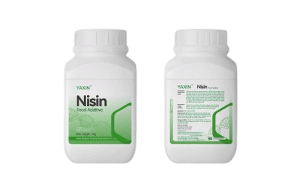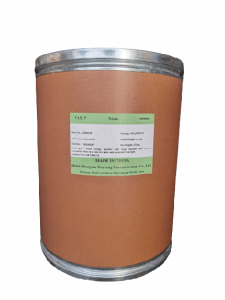
 CONTACT
CONTACT
- Linkman:Linda Yao
- Tel: +8618231198596
- Email:linda.yao@dcpharma.cn
- Linkman:CHARLES.WANG
- Department:Overseas
- Tel: 0086 0311-85537378 0086 0311-85539701
Antibacterial Application of ε-Polylysine Hydrochloride in Food Materials
TIME:2025-02-07ε-Polylysine Hydrochloride is a natural biopolymer with excellent antibacterial properties, widely used in food-contact materials. Below is a detailed introduction to its applications:
Ⅰ.Application in Food Packaging Materials
1. Film Materials
By incorporating ε-polylysine hydrochloride into plastic films such as polyethylene (PE) and polypropylene (PP), antibacterial packaging films can be produced. These films allow ε-Polylysine Hydrochloride to migrate to the film surface, where it interacts with the negatively charged bacterial cell membrane, disrupting its structure and causing leakage of intracellular substances, thereby inhibiting bacterial growth. For instance, when used in the packaging of meat, fruits, and other food products, these antibacterial films help extend shelf life and preserve freshness and quality.
2. Paper-Based Materials
ε-Polylysine Hydrochloride can be applied to paper-based packaging materials through impregnation or coating techniques. It adheres to the paper fibers, exerting an antibacterial effect on bacteria that come into contact with the paper. When used for packaging pastries, biscuits, and other food products, antibacterial paper materials effectively prevent microbial contamination. Additionally, since it is natural and biodegradable, it aligns with environmental protection requirements.
Ⅱ.Application in Coatings for Food Processing Equipment
1. Stainless Steel Equipment
Stainless steel equipment is widely used in food processing. Applying a coating containing ε-Polylysine Hydrochloride to stainless steel surfaces forms an antibacterial protective layer, preventing bacterial colonization and proliferation. For example, when applied to cutting equipment, conveyor pipelines, and other surfaces in meat processing facilities, it helps reduce bacterial contamination and minimize the risk of cross-contamination in food production.
2. Plastic Processing Tools
For plastic food processing tools, such as plastic containers and mixing paddles, ε-Polylysine Hydrochloride coatings can be applied through spraying or dipping methods. This enhances the cleanliness of the tools and improves food safety during processing.
Ⅲ.Application in Food-Contact Rubber Products
1. Sealing Gaskets
Rubber sealing gaskets are commonly used in food packaging containers. Incorporating ε-Polylysine Hydrochloride into rubber materials provides antibacterial properties to the gaskets. This helps prevent bacterial infiltration through the seals, ensuring the quality and safety of stored food.
2. Rubber Gloves
Rubber gloves worn by food processing personnel can be enhanced with ε-Polylysine Hydrochloride to effectively inhibit bacterial growth on the glove surface. This reduces the risk of bacterial transmission from workers' hands to food, ensuring hygiene during food handling and processing.
Ⅳ.Application in Food-Contact Composite Materials
1. Multilayer Composite Packaging Materials
Food packaging materials composed of multiple layers, such as paper/plastic/aluminum foil composites, can incorporate ε-Polylysine Hydrochloride into one or more layers to provide antibacterial functionality. When used for packaging coffee, milk powder, and other powdered foods, these antibacterial composites effectively prevent microbial contamination and extend shelf life.
2. Composite Equipment Components
Certain food processing equipment components, such as conveyor belts and rollers, can be modified by incorporating ε-Polylysine Hydrochloride into their composite materials. This endows their surfaces with antibacterial properties, reducing bacterial adhesion and proliferation, thereby enhancing equipment hygiene.
- Tel:+8618231198596
- Whatsapp:18231198596
- Chat With Skype







